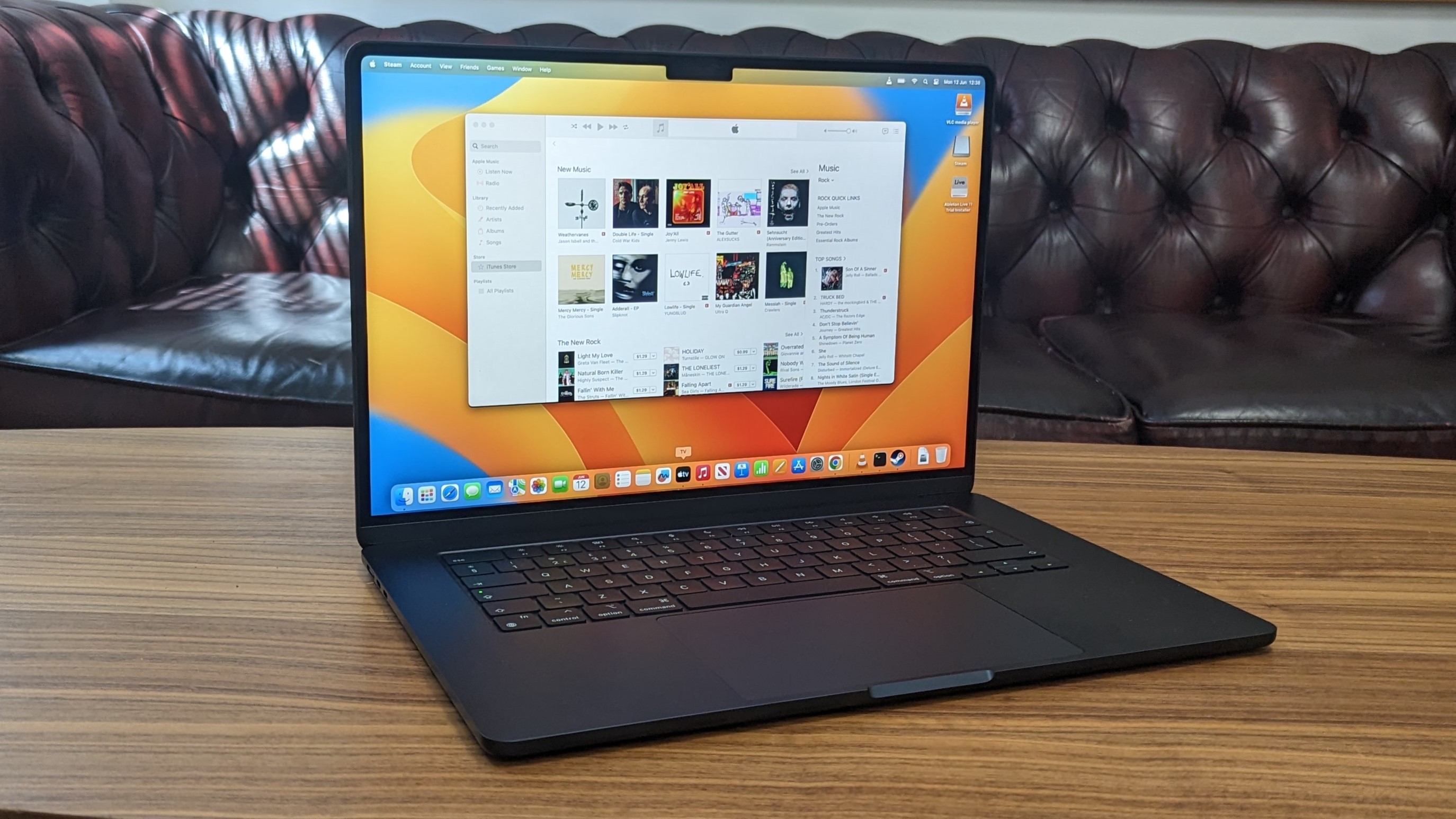
Apple MacBook Air 15-inch (2023): Two-minute review
As expected, Apple announced a new MacBook Air 15-inch (2023) at WWDC 2023, bringing a 15-inch screen to its thin and light laptop line for the first time.
It follows the 13-inch MacBook Air (M2, 2022) which launched at last year's WWDC with a new design, new M2 chip, and a higher price tag than its predecessor.
I've spent a few days using and fully reviewing the new 15-inch MacBook Air – so is this a bold new reinvention of the Air, or a size increase that isn't needed, and which misses the point of the original model (as some detractors suggest)?
Starting at $1,299 / £1,399 / AU$2,199, the Apple MacBook Air 15-inch (2023) isn’t outrageously priced compared to other 15-inch laptops, and looks particularly good value compared to the latest Dell XPS 15.
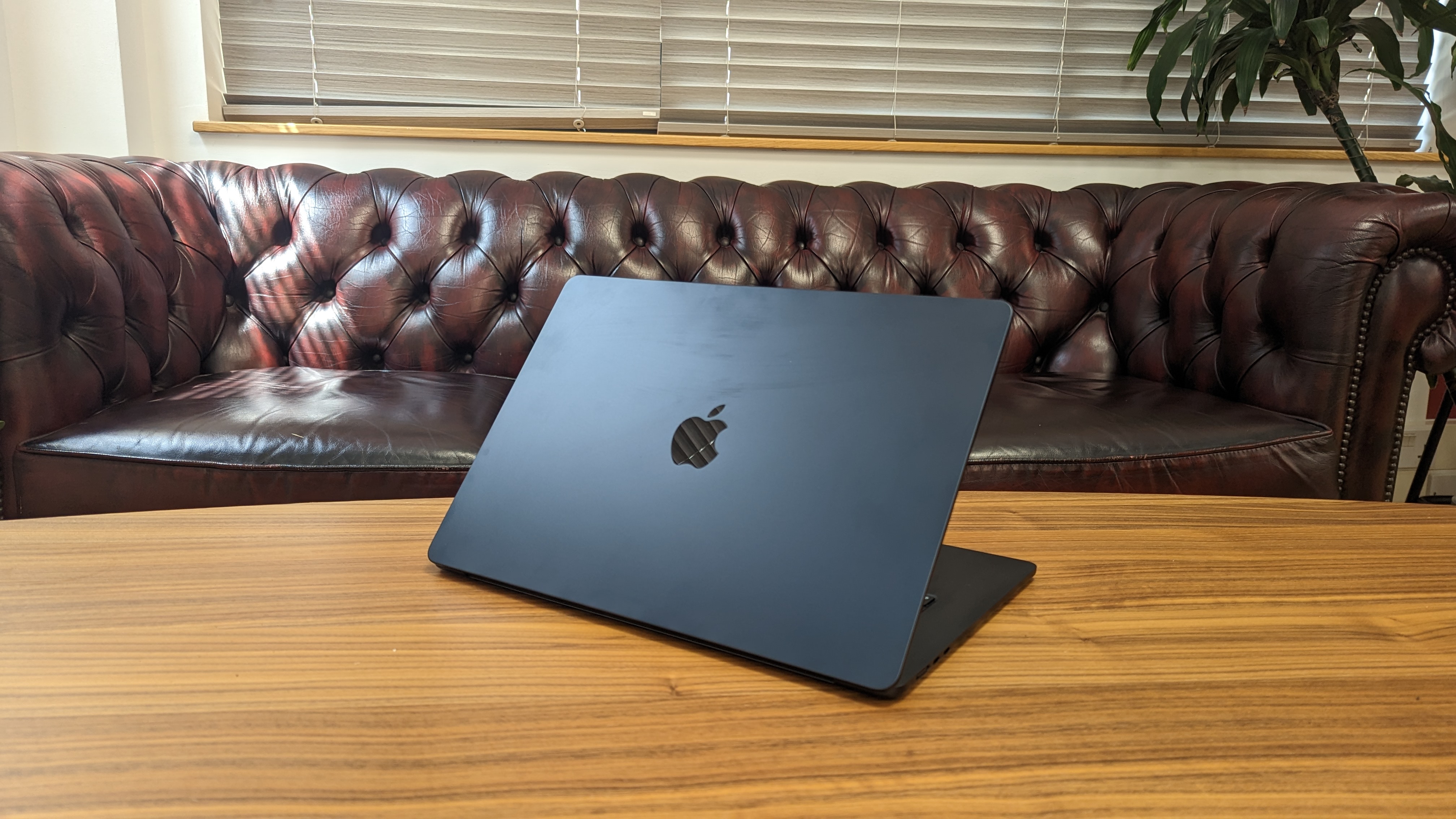
It also compares favorably with the MacBook Air 13-inch (M2, 2022), which launched for only $100 less last year with a smaller screen, and with a less capable GPU in the base model. However, after announcing the new 15-inch MacBook Air Apple cut the price of the 13-inch by a further $100, making it more affordable, and worth considering if you don’t need the bigger screen.
As for the design, the Apple MacBook Air 15-inch (2023) looks pretty much identical to the 13-inch model… but bigger. That’s no bad thing, as last year’s model arrived sporting a much-needed redesign that dropped the iconic but dated wedge shape of previous MacBook Airs for a more modern angular shape with thinner bezels. And while the larger screen has necessitated a larger body, Apple has done a good job of keeping the Apple MacBook Air 15-inch (2023) thin and reasonably light.
That does mean that ports are again sacrificed, but if you’ve used a modern MacBook Air you probably won't be surprised to learn that you’ll need to make do with two Thunderbolt 4 USB-C ports. The MagSafe 3 port, which comes with a proprietary connector that snaps into the port via magnets to charge the Apple MacBook Air 15-inch (2023) makes a welcome return. While I’m not usually a fan of proprietary ports, MagSafe 3 is a great addition, as not only does it make connecting the power supply quick and easy, it also means that if the cable is yanked the connector comes away easily, minimising potential damage to the port or laptop.
You can also charge the 15-inch MacBook Air via a USB-C port, so you at least have some flexibility if you need to borrow a charger from someone.
The larger body has allowed for Apple to include six speakers in the MacBook Air 15-inch (2023), and these, combined with the larger screen that’s impressively bright and vibrant, make for a laptop that's excellent for watching movies and TV shows on. It can even play the odd game, thanks to the powerful M2 chip within.
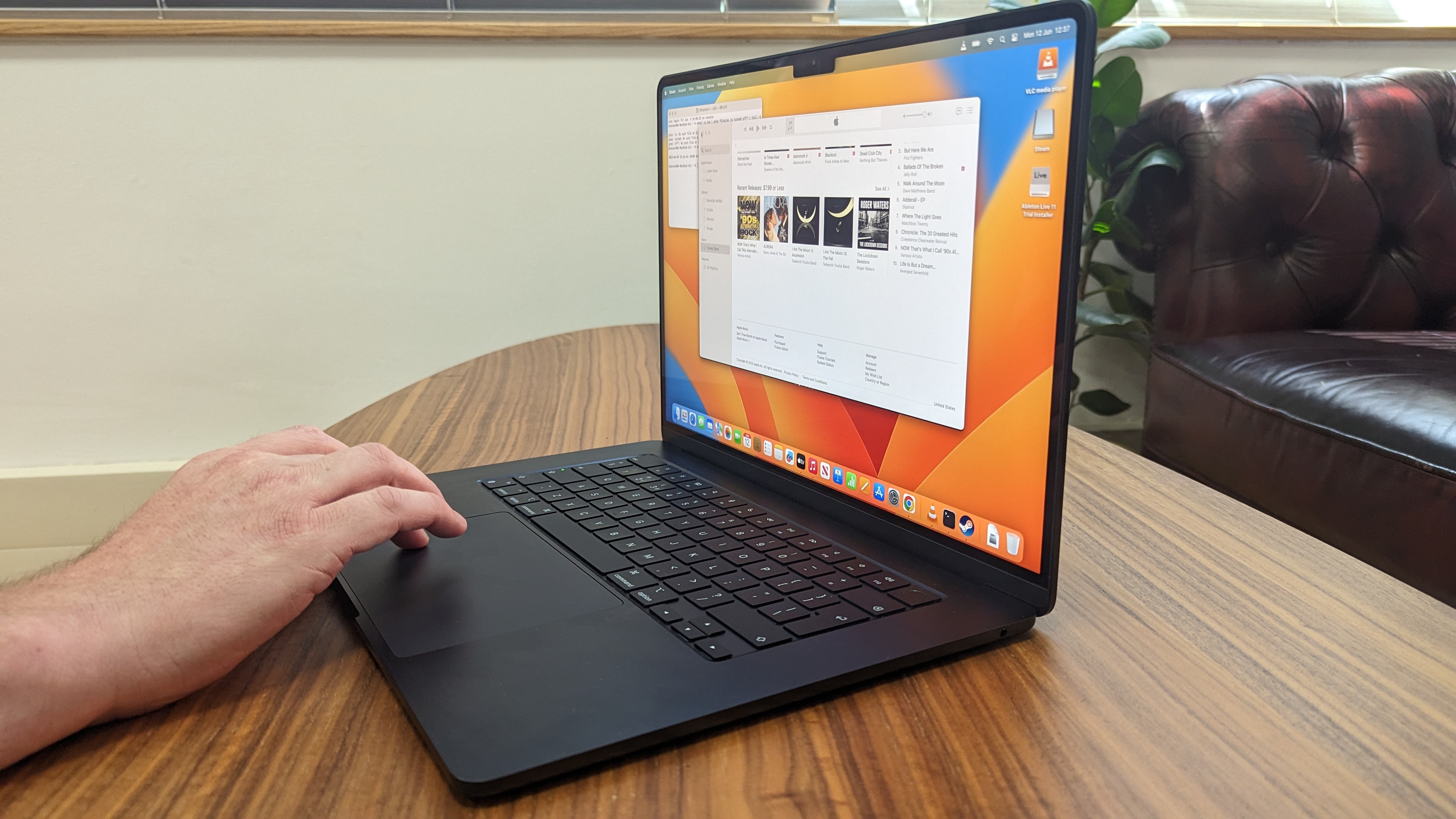
When it comes to performance, the 15-inch MacBook Air sticks pretty close to the 13-inch model from last year – that’s also no bad thing, as there’s a reason why that model sits atop our best laptops list. For day-to-day tasks, and for a spot of more demanding work like video editing and music production, the Apple MacBook Air 15-inch (2023) does a great job. However, anyone expecting a performance leap over last year’s 13-inch model will be disappointed, and should hold on for the inevitable MacBook Air with M3 chip that will no doubt appear in the next year or so.
There are some expected downsides to the increased screen size. The most obvious is that the Apple MacBook Air 15-inch (2023) is larger and heavier than the 13-inch model, and that means it’s less easy to carry around, and limits where you can work on it.
Because there’s no perceptible performance difference between the 13-inch and 15-inch MacBook Airs, the choice of which is best for you really boils down to how important the larger screen is for you. If you want an immersive experience while watching movies, want to listen to music on the best speaker setup on a laptop, or like to feel comfortable when working on multiple documents, the 15-inch is worth the price increase.
However, if portability remains your most pressing need, then go for the 13-inch model, which now offers even better value for money thanks to the recent price drop.
Apple MacBook Air 15-inch (2023) review: Price and availability
- Announced on June 5, 2023
- Ships week of June 11, 2023
- Base model is $1,299 / £1,399 / AU$2,199
The MacBook Air 15-inch (2023) started shipping out globally to customers from June 11, 2023. Recent MacBook launches have been affected by stock issues, with some customers who've pre-ordered having to wait to get hold of their laptops, but at the time of writing it doesn’t seem like there will be any major stock issues around this release.
In the present climate, with many people feeling the cost of living squeeze, I can’t see a massive rush to get hold of a new premium laptop – but Apple does make desirable products, so it certainly won’t struggle to shift the larger MacBook Air.
It helps that the price isn’t outrageous, with the base model starting at $1,299 / £1,399 / AU$2,199.
This model comes with the M2 chip with an 8-core CPU and 10-core GPU, 8GB of unified memory and a 256GB SSD. Impressively – at least for US purchasers – this is just $100 more than that the 13-inch MacBook Air launched for last year, which started at $1,199 / £1,249 / AU$1,899; prospective buyers in the UK and Australia are seeing a more noticeable price hike.
While the 13-inch MacBook Air from last year features similar specs, such as 8GB memory and 256GB SSD, the base model features an M2 chip with an 8-core CPU (the same as the 15-inch model) and an 8-core GPU.
So, if you're in the US, for $100 more you’re getting a larger screen and better graphics performance with the MacBook Air 15-inch. The base model of the 13-inch MacBook Air comes with a 30W USB-C power adapter, while all models of the 15-inch MacBook Air come with a 35W dual USB-C port power adaptor, which can also be configured to a 70W USB-C adaptor when you order the laptop for no extra charge.
This means the new MacBook Air’s battery can charge much faster, and if you buy the 13-inch model you'd to pay extra for these chargers.
This all helps make the new MacBook Air seem pretty good value compared to last year’s model, particularly in the US, though it’s still pricey.
However, at the WWDC 2023 announcement of the 15-inch model, Apple also revealed that the 13-inch model from 2022 would get a price cut – so the base model can now be had for $1,099 / £1,149 / AU$1,799 – making that MacBook Air much better value, and making value-for-money comparisons less straightforward.
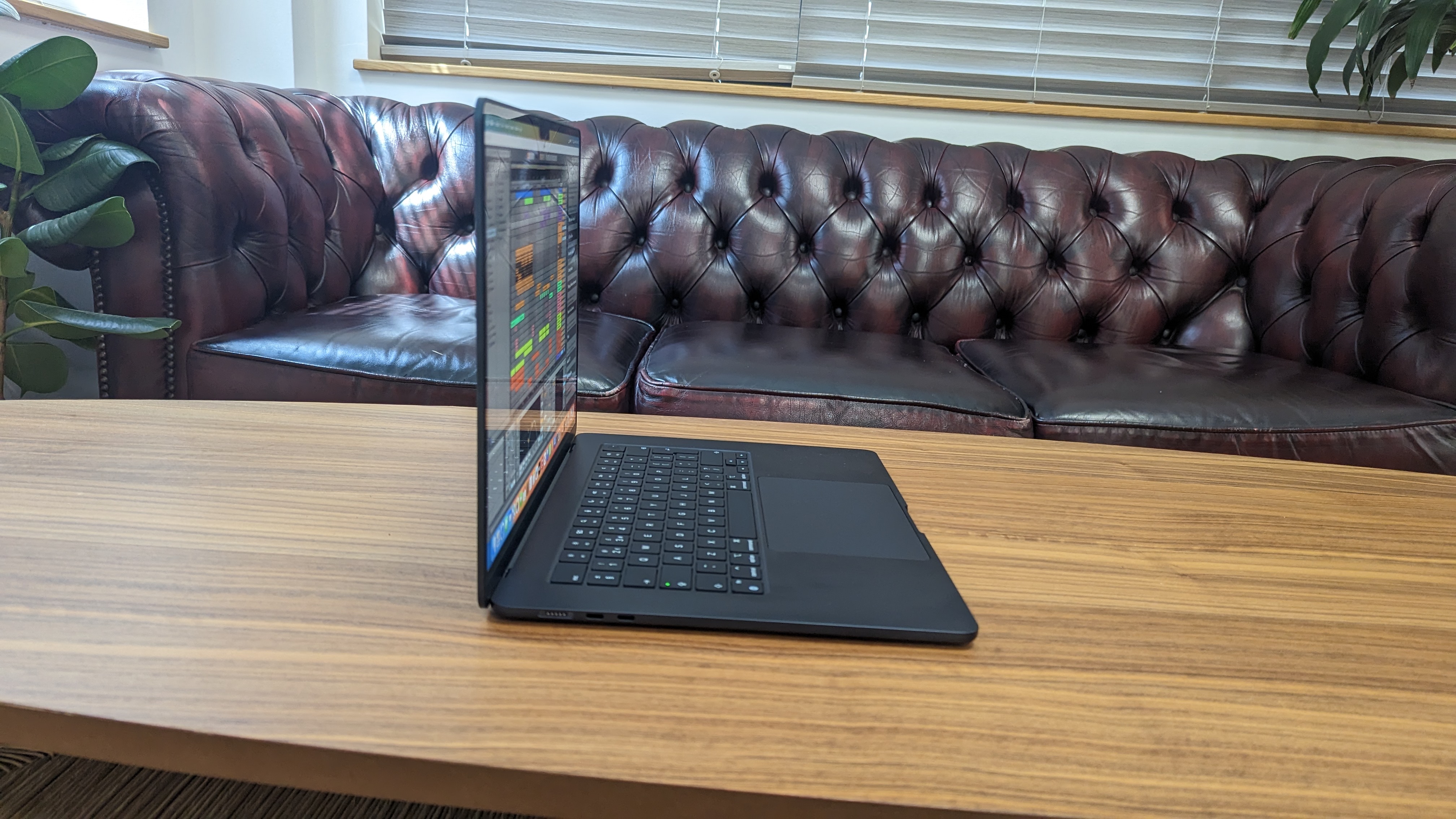
This is the price I feel the 13-inch model should have launched at last year, as it was a bit too expensive compared to the M1 model from 2020, which remains on sale and continues to offer exceptional value for money.
As with previous MacBooks, there is another configuration of the 15-inch MacBook Air, but the only difference is a larger 512GB SSD. This costs $1,499 / £1,599 / AU$2,499, which means you’re essentially paying $200 / £200 / AU$300 more for an extra 256GB of storage,which is pretty pricey.
You can also configure it to come with 1TB and 2TB storage, and upgrade to 16GB or 24GB of unified storage, upping the price further. This being an Apple device, it’s not easy to open up and upgrade (or fix) components yourself, so you’ll want to think carefully about the best configuration that suits your needs and budget, as it’s pretty much impossible to change once you’ve got your laptop.
Compared to Windows laptops like the Dell XPS 15, the MacBook Air 15-inch (2023) offers decent value for money, as it’s cheaper than the Dell’s 15-incher, while offering better performance.
- Price score: 4.5/5
Apple MacBook Air 15-inch (2023) review: Specs
The Apple MacBook Air 15-inch (2023) comes in two main configurations, with the only difference being the storage capacity of the SSD.
Each of these options can be configured to add more memory (up to 24GB), and add storage up to 2TB.
Apple MacBook Air 15-inch (2023) review: Design
- Larger 15-inch screen
- Same overall design as last year's model
- Apple claims it’s the thinnest 15-inch laptop
Last year’s MacBook Air introduced a new design that represented the biggest change to Apple’s most affordable MacBook in years. It was a welcome refresh that gave the MacBook Air 13-inch (2023) a much needed modern look, with a greatly improved screen and MagSafe 3 charging port.
Apple has kept that same design language for the 15-inch model. Apple considers the 13-inch and 15-inch models to be very much part of the same family of products, and they look pretty much identical, except for the size.
That means the dual USB-C ports and MagSafe charger ports are in the same places. Even the keyboard is the exact same size, although the trackpad is larger thanks to the additional space available on the bigger body of the 15-inch Air.
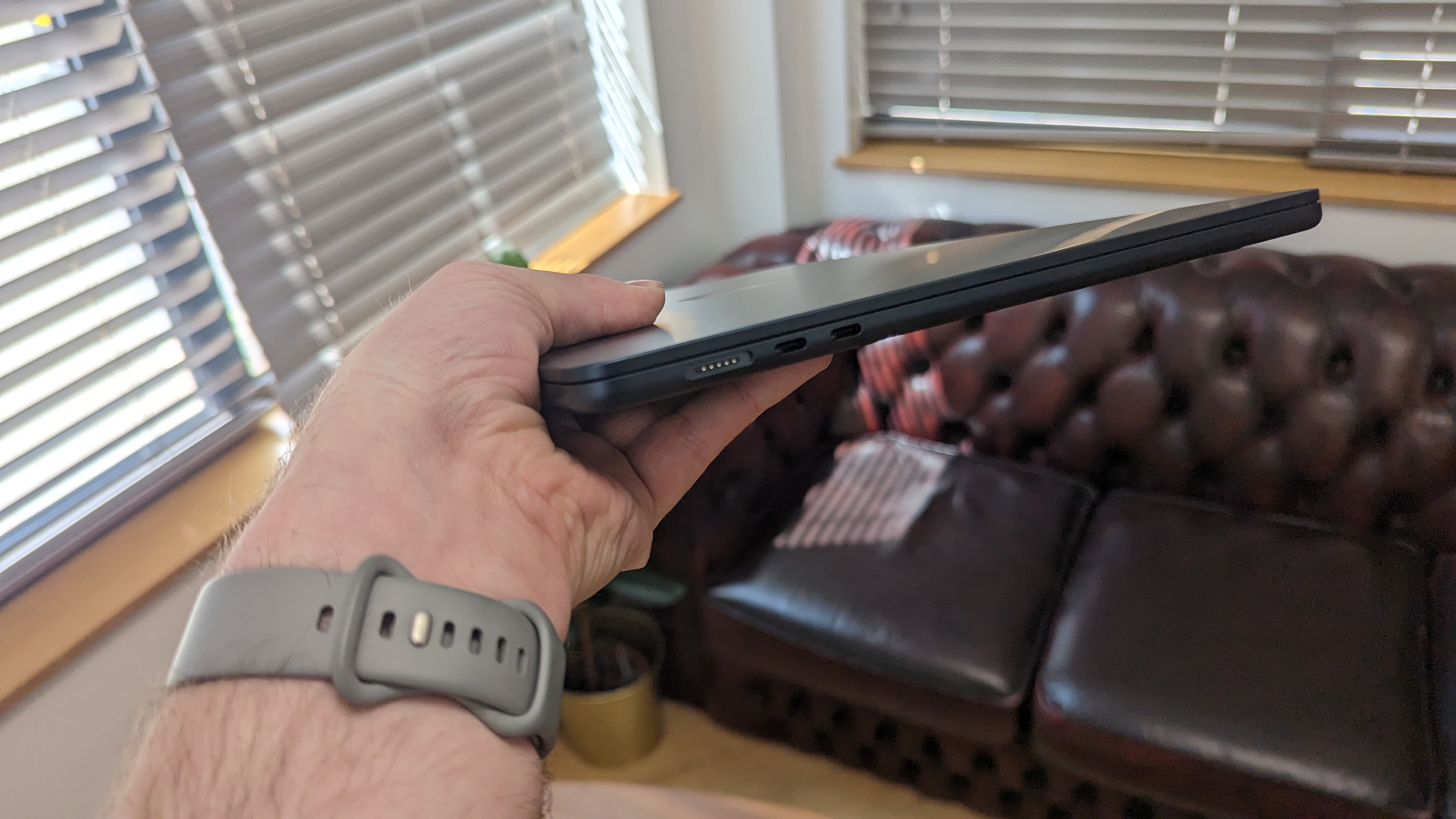
Apple claims that this is also the world’s thinnest 15-inch laptop at just 11.5mm, and that certainly compares well to the Dell XPS 15 and LG gram 15, which are both 18mm thick. It’s also only slightly thicker than the 13-inch MacBook Air, which measures 11.3mm.
That’s certainly impressive, and goes some way to asuaging our fears that a larger MacBook Air would mean sacrificing portability.
The overall dimensions are 13.40 x 9.35 x 0.45 inches (340 x 212 x 15.6mm), and Apple has retained the fan-less design of previous MacBook Airs to keep this new model as thin and light as possible. It’s rare to find a completely fan-less laptop, especially a 15-inch one, as the compact bodies of laptops means that keeping the components inside them cool while running. Apple argues that thanks to the power efficiency of its M1 and M2 chips, less heat is produced, so the need for fans is reduced.
The lack of fans in the MacBook Air 15-inch (2023) means that it’s pretty much silent when in use, which is impressive for such a large and capable laptop.
While the MacBook Air 15-inch remains almost as thin, it’s noticeably heavier than the 13-inch model, at 3.3 pounds (1.51kg), compared to the 13-inch model’s 2.7 pounds (1.24kg).
Of course, there are heavier laptops out there, but it’s a reminder that there are sacrifices being made when it comes to portability with the 15-inch model, and something to take into consideration if you’re looking for a laptop to easily carry around with you all day.

The biggest differences between the two MacBook Air models, however, is the screen size. The 13-inch MacBook Air has a 13.6-inch Liquid Retina display with a resolution of 2560 x 1664 pixels, while the 15-inch model has a 15.3-inch Liquid Retina display with 2880 x 1864 resolution. As we’ve seen with the 14-inch and 16-inch MacBook Pros, Apple has upped the resolution along with the screen size, and that means the pixel density of both displays is roughly the same – which basically means that the image quality remains just as sharp, even with the larger screen.
Otherwise, there’s not much difference between the screens, as both have brightness of 500 nits, support for the P3 wide color gamut (offering richer and more accurate colors) and True Tone technology, which tweaks the warmth of the colors on the display according to the ambient light you’re using the MacBook Air in.
Both screens feature the notch that surrounds the 1080p webcam, and drops down slightly into the screen. While these notches were a bone of contention when first introduced with the original 14-inch MacBook Pro in 2021, several MacBooks have now been released that sport it, and macOS, the operating system the best MacBooks and Mac run, now has an interface which accommodates the notch and prevents it from being distracting.
The screen looks stunning in use, and the larger size really does impress when you first use it. While it lacks the high refresh rates of Apple’s ProMotion-supporting MacBooks, like this year’s MacBook Pros, the large and vibrant screen is a joy to look at, and the thin bezels that surround it really do help make the screen the star of the show.
Another major change in the design is less visible. Due to the larger body of the 15-inch MacBook Air, Apple has managed to fit in six speakers, rather than the four in the 13-inch model. Not only does this make the 15-inch model more capable of playing audio at higher volumes, the six speakers can make soundtracks and music sound more immersive. Of course, these are still small speakers sitting relatively close to each other inside a laptop, so they aren’t going to compare to a proper home theater setup, but they will put the usual two speaker setup of most laptops to shame.
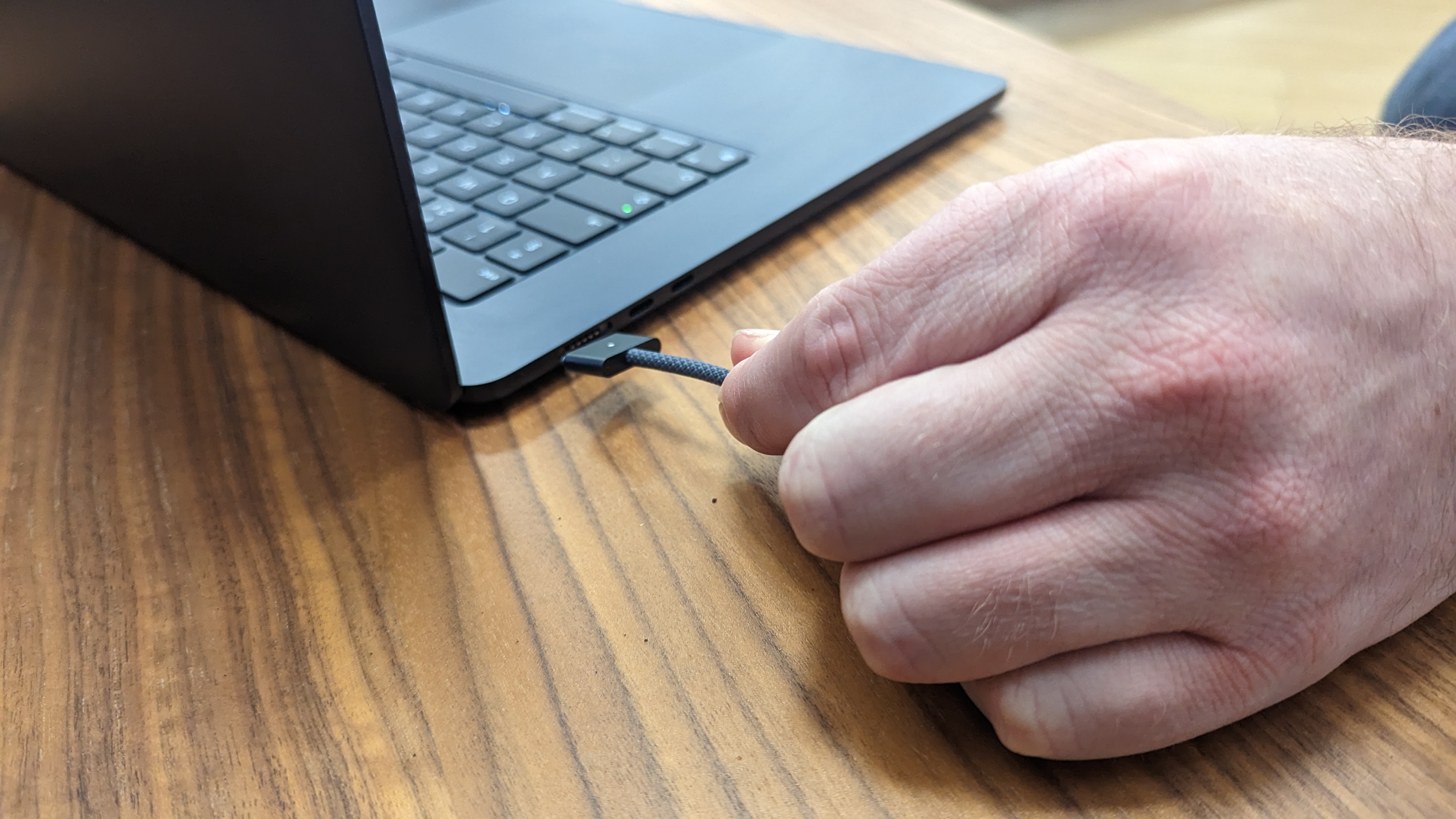
Overall, the design of the 15-inch MacBook Air is fantastic, and compared to other 15-inch laptops it impresses with a modern and minimalistic look that’s available in several colors. The 15-inch MacBook Air I reviewed came in ‘Midnight’, a dark blue which looks great (and comes with a charging cable that matches the color, which is a nice touch), and there are also ‘Starlight’, ‘Space Gray’ and ‘Silver’ colors.
The inclusion of just two Thunderbolt 4 ports means it’s not ideal as a productivity machine for people who use lots of legacy peripherals, though you can always attach a USB-C hub. The ports at least offer high-speed data transfers, and can power up to a 6K external monitor, and the inclusion of the MagSafe port means you don’t have to sacrifice a Thunderbolt port when topping up the battery (though you can still charge via one of those ports if you need to borrow a USB-C charger).
If you’re used to using the 13-inch MacBook Air, the 15-inch model feels familiar, and there’s a slightly uncanny feeling using the bigger version. Apple’s ability to keep it just as thin is great, and while it is heavier, I was still able to hold it comfortably in one hand, with the thin bezels around the screen helping to keep the overall size of the MacBook Air as small as possible. So if you loved the look of the 13-inch MacBook Air, but wanted a bigger screen without having to lug around a much bulkier MacBook Pro, then the 15-inch MacBook Air will be ideal.
- Design score: 4/5
Apple MacBook Air 15-inch (2023) review: Performance
- Powered by M2 chip
- No 8-core GPU option
- Fast and quiet
Here’s how the MacBook Air 15-inch (2023) performed in our suite of benchmark tests:
Cinebench R23 CPU: Single-Core: 1,589; Multi-Core: 8,577
Geekbench 6 Single-Core: 2,647; Multi-Core: 9,994
Battery Life (TechRadar movie test): N/A
The MacBook Air 15-inch (2023) is powered by Apple’s M2 chip, which debuted alongside the MacBook Air (M2, 2022) and MacBook Pro 13-inch (M2, 2022), and has since appeared in the new Mac mini (2023) as well.
So, even before I took the latest MacBook Air out of the box, I had a decent idea of how it was likely to perform; although, as mentioned, anyone hoping for a big performance leap over last year’s MacBook Air will be disappointed.
The MacBook Air 15-inch (2023) appears to have been consciously designed to offer the same level of performance as the 13-inch model from 2022, so the main choice consumers facing consumers will be how much they want to spend, and what screen size they prefer. Apple took a similar tack with the 14-inch and 16-inch MacBook Pros.
With the 15-inch MacBook Air's screen having a slightly higher resolution in order to maintain the pixel density of the bigger screen, image quality remains pretty much the same on both MacBook Airs.
All models of the 15-inch MacBook Air also come with a 10-core GPU as part of their M2 chips. However, the base model of the 13-inch MacBook Air has an M2 chip with an 8-core GPU (which can be upgraded to a 10-core GPU for an additional cost).
Those two extra GPU cores help with the additional strain of pushing graphics to a larger, higher-resolution, screen, and again levels out a lot of the performance differences.
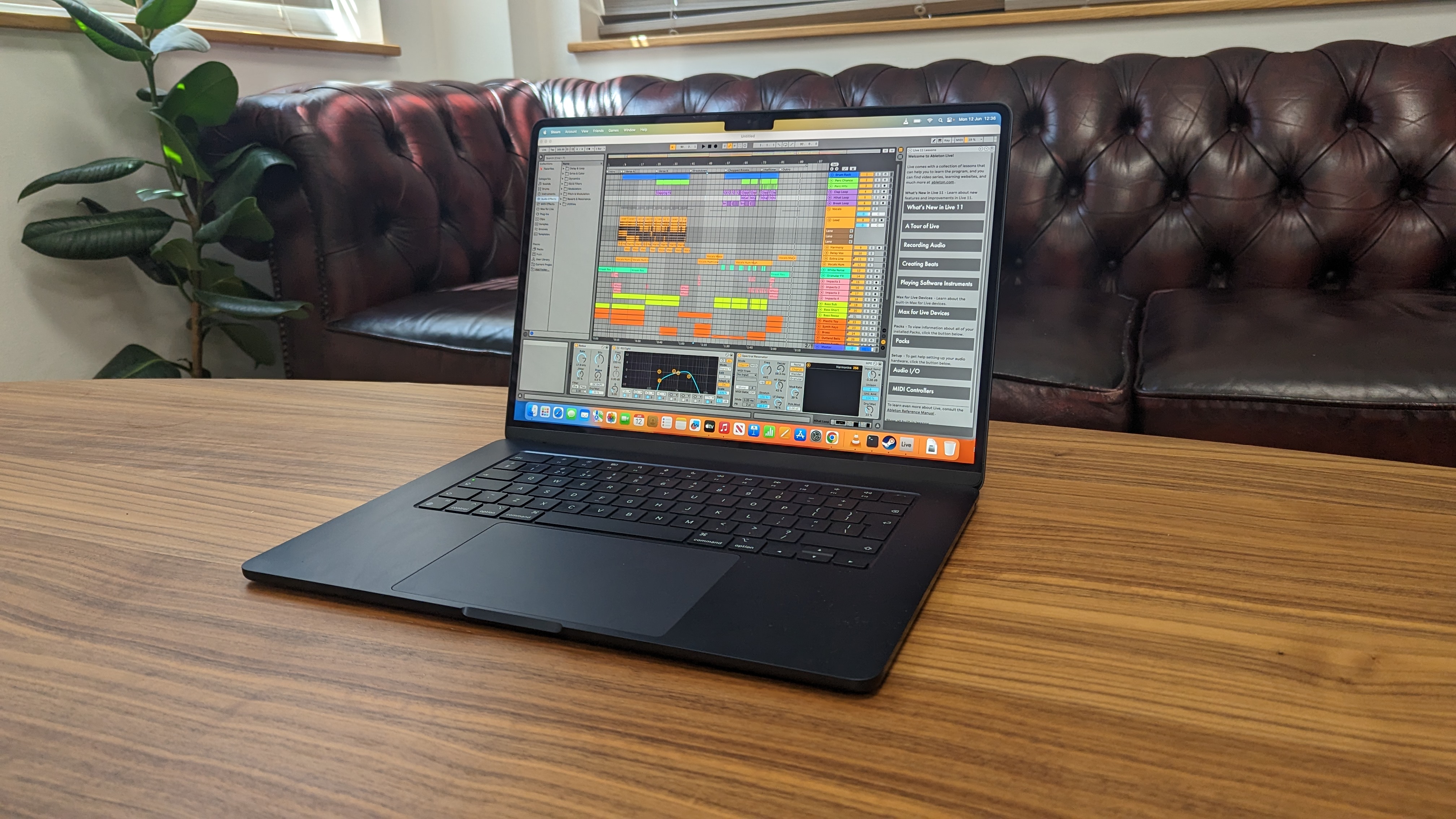
Where Apple really wants to highlight differences is with the older Intel-based MacBook Air. The company claims the 15-inch M2 MacBook Air is up to 12 times faster than the ‘fastest’ Intel-based MacBook Air. That’s an impressive number, but the last Intel MacBook Air was launched back in early 2020, so you would expect a significant performance leap anyway.
Apple also compares performance to “the best-selling 15-inch PC laptop with a Core i7 processor,” and suggests the MacBook Air 15-inch (2023) is twice as fast. This is a statement that is pretty much meaningless, as it’s not clear which laptop Apple is comparing its MacBook Air to, and it doesn’t explain what it means by ‘fast’ either – does it mean processing power, graphical power, overall power, or something else?
What it does tell us, however, is that Apple is clearly feeling bullish about the performance of the MacBook Air 15-inch (2023) and its M2 chip – which it should, as while the M2 wasn’t the generational leap over the M1 that some of us had been waiting for, it’s impressed me in the all the products it’s appeared in.
And that’s what it does again with the MacBook Air 15-inch (2023). Throughout my time using it, the MacBook Air 15-inch (2023) performed really well, with macOS Ventura feeling fast and responsive, and with apps such as Apple TV+, Chrome and Photoshop opening quickly; I was also able to switch between apps easily without any slowdown.
Apple sent me the MacBook Air 15-inch (2023) with 16GB of unified memory and 512GB SSD. This will likely be the most popular model, though you can get it with 24GB of memory as well.
Performance-wise it certainly felt the same as the 13-inch model, and I used it for a variety of similar tasks as when I reviewed the MacBook Air 13-inch (M2, 2022).
The similarities in performance are highlighted by the benchmark tests that I ran, and showed very similar numbers. For example, in the Cinebench R23 test, the 13-inch scored 1,597 and 8,098 in single-core and multi-core tests, respectively.
The MacBook Air 15-inch (2023) scored 1,589 and 8,577 in the same tests, and Geekbench 5 tests were also essentially the same as well. You’ll notice that I also ran Geekbench 6 tests, which uses different techniques to test the hardware, so the scores are different.
The big differences between the two M2 MacBook Airs, then, are the screen and speakers. When it comes to the screen, the extra size really makes working on the laptop more enjoyable, especially if you have a lot of apps open at once. Reading text is more comfortable, and watching movies and playing games is a more immersive experience.
Movies look stunning thanks to the bright, vibrant colors and high resolution of the screen, and the larger screen size will be particularly welcome if you're going to be watching a lot of movies or TV shows on your laptop. The colors of highly-stylised animation such as that of Spider-Man: Into The Spiderverse really pop, while more grounded movies and TV shows, such as Silo on Apple TV+, offer realistic and accurate colors. For pure movie watching experience, there are few better laptops you can buy – especially when the six built-in speakers really get going.
And, while Apple will never release a pure gaming laptop, with each new release of its own silicon we’re getting closer to playing many of the games that are coming to Windows PCs on Macs. The M2 MacBook Air 15-inch was able to run Shadow of the Tomb Raider, a visually impressive game even a few years after its release, at 31fps (frames per second) at the highest visual quality, meaning it’s perfectly playable, though still not near the 60fps most gaming laptops at this kind of price would manage.
Dropping the image settings to their lowest quality upped the frame rate to 39fps. So, this isn’t a laptop you’re going to want to buy to game on, but the gorgeous screen and acceptable performance hint at an exciting future for gaming on Macs.
It's also worth pointing out that due to its fan-less design, the MacBook Air 15-inch remained silent in use throughout my time with it. This is particularly impressive when gaming, as I’m used to gaming laptops that fire up their fans at the slightest provocation, leading to immersion-breaking whirring.
However, this does mean there's a possibility of throttling, where the device purposely lowers performance to ensure components don’t overheat, and while Apple’s M2 chips are much more resistant to having to throttle their own performance, if you’re doing any intensive workloads for long periods of time, a laptop with fans, such as the 13-inch MacBook Pro (M2, 2022) is a wiser choice. While putting the MacBook Air 15-inch (2023) through its paces, I did notice that the strip of metal above the keyboard became noticeably hot to the touch.
However, the larger size does come at a cost to versatility. Last year’s MacBook Air, as with many of the best 13-inch laptops, is the perfect size for working on public transport such as trains and planes, as it can fit comfortably on the drop-down tables on the backs of chairs. The MacBook Air 15-inch (2023) sacrifices this for the larger screen, so if you’re looking for a laptop to use on commutes or while travelling, this probably won’t be for you.
So, don’t expect any sort of generational leap between the MacBook Air 15-inch (2023) and last year’s model – they are, after all, the same generation. While there will no doubt be an M3 version of both MacBook Airs in the future, the M2 is an excellent chip for day-to-day use, including web browsing, video editing and even music production using Ableton Live 11. Performance with even a very complex project in Ableton Live was good, but when recording and performing live with multiple inputs (such as MIDI keyboards), I’d suggest upping the memory to 24GB when purchasing.
- Performance score: 4/5
Apple MacBook Air 15-inch (2023) review: Battery life
- Potentially long
- Charges quickly
When it comes to the battery life of the MacBook Air 15-inch (2023), Apple promises up to 15 hours of wireless web browsing and 18 hours of video playback.
In my time with the MacBook Air 15-inch, I found that to be roughly accurate – I was able to use it unplugged for a whole workday, again proving how well optimized the M2 chips are when balancing performance and power consumption.
However, when running our usual battery life benchmark, which plays a looped 1080p video until the battery runs out, it lasted just six hours. This obviously doesn’t seem right, so I contacted Apple who agreed, and suggested it may have been due to a background service (such as iCloud) running and draining the battery life faster.
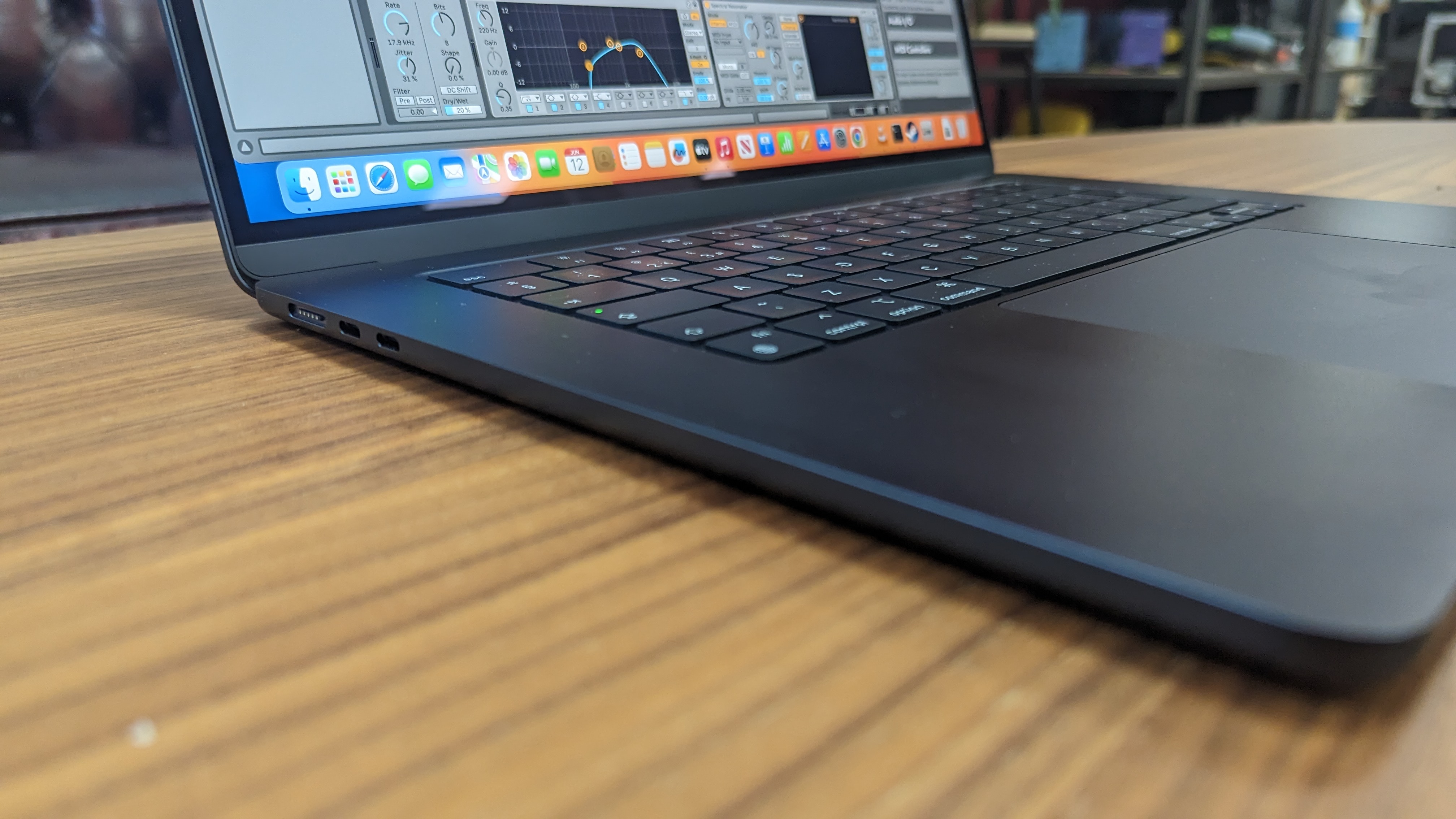
So I'm going to re-run the battery life test and make sure that all those services have been stopped, and will update this review when done (due to the nature of the benchmark, it can take a while).
Our sister website, Tom’s Guide, has run its own benchmarks and found the MacBook Air 15-inch (2023) to last 14 hours and 59 minutes when continuously browsing the web, which is far more in keeping with what I expect, and what I experienced when I was using the laptop for day-to-day tasks.
- Battery score: 4.5/5
Should you buy the MacBook Air 15-inch (2023)?
Buy it if...
Don't buy it if...
MacBook Air 15-inch (2023) review: Also consider
If our MacBook Air 15-inch (2023) review has you considering other options, here are two laptops to consider...
How I tested the MacBook Air 15-inch (2023)
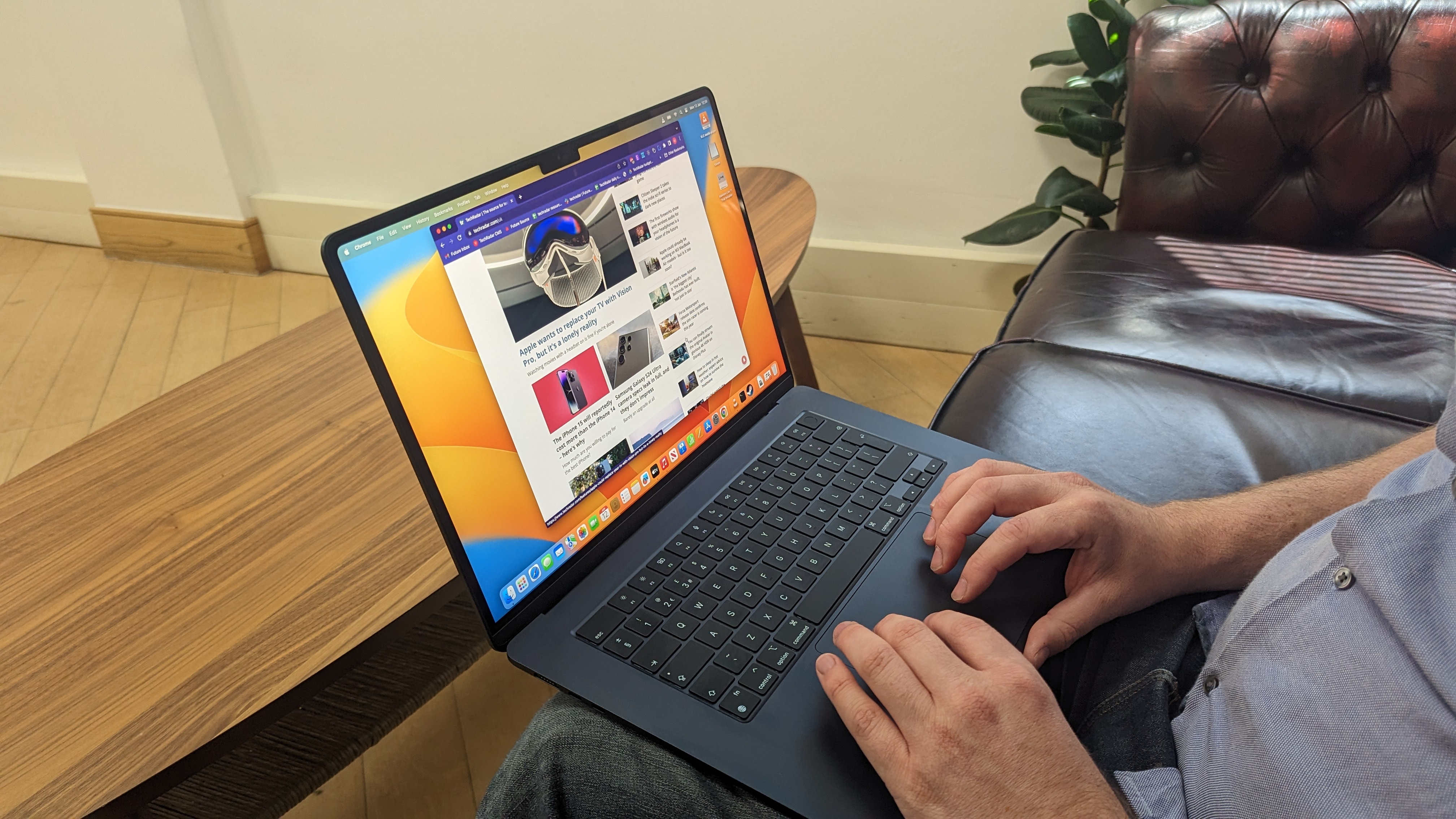
- I spent four days using the MacBook Air 15-inch (2023)
- I edited 4K videos and used it as my day-to-day work laptop
- I ran our usual suite of standardized benchmarks
Apple sent me the MacBook Air 15-inch (2023) a few days after its official announcement at WWDC 2023. As with other Apple launches, the date it gets into the hands of customers isn't long after its announcement, and that meant I had four full days to test out the MacBook Air 15-inch (2023) so you could read this review before you buy.
For those four days, I exclusively used the MacBook Air 15-inch (2023) as my main laptop, working on this review and other work commitments, as well as browsing the web, editing home movies and photos, and playing a few games.
I also ran our suite of benchmarks to see how well the MacBook Air 15-inch (2023) performs in a variety of use cases, and compared it to the MacBook Air 13-inch (2022), MacBook Pro 14-inch (2023) and MacBook Pro 13-inch (2022), all of which I have extensive experience with.
First reviewed June 2023







